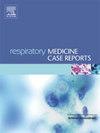Expanding applications of 3D-Printed stents to non-stenotic airways
IF 0.7
Q4 RESPIRATORY SYSTEM
引用次数: 0
Abstract
Tracheobronchial stents have advanced significantly since their introduction in the 1980s, with virtual airway modeling and three-dimensional (3D) printing enabling the production of patient-specific custom airway stents. Since their FDA approval in 2019, 3D-printed custom stents have offered a promising solution for complex airway conditions. However, their use has primarily focused on tracheal stenosis and tracheobronchomalacia. The two cases presented here demonstrate novel applications of 3D printed stents in non-malignant airway diseases, specifically extrinsic vascular compression and bronchopleural fistula (BPF) from airway dehiscence.
The first case describes a 27-year-old male with tetralogy of Fallot complicated by extrinsic vascular compression of the bilateral mainstem bronchi, leading to recurrent mucus plugging, lung collapse, and respiratory failure. We designed a custom undersized Y stent to maintain airway patency while minimizing risks of vascular erosion. The second case details a 38-year-old post-lung transplant patient with a non-healing BPF with airway dehiscence and resultant respiratory failure. A bifurcated 3D-printed stent was successfully deployed to bypass the large fistula, resolving a chronic air leak.
These cases illustrate the versatility and potential of 3D-printed stents in addressing complex airway pathologies beyond tracheal stenosis or malacia and highlight critical considerations in stent design and deployment.
扩大3d打印支架在非狭窄气道中的应用
自20世纪80年代引入以来,气管支气管支架已经取得了显着进步,虚拟气道建模和三维(3D)打印使生产针对患者的定制气道支架成为可能。自2019年获得FDA批准以来,3d打印定制支架为复杂的气道状况提供了一个有希望的解决方案。然而,它们的使用主要集中在气管狭窄和气管支气管软化。本文介绍的两个病例展示了3D打印支架在非恶性气道疾病中的新应用,特别是由气道破裂引起的外源性血管压迫和支气管胸膜瘘(BPF)。第一个病例描述了一个27岁的男性法洛四联症合并双侧主支气管外源性血管压迫,导致复发性粘液堵塞,肺萎陷和呼吸衰竭。我们设计了一个定制的小尺寸Y型支架来维持气道通畅,同时最大限度地降低血管侵蚀的风险。第二个病例详细介绍了一名38岁的肺移植后患者,患有未愈合的BPF,气道裂开并导致呼吸衰竭。一个分叉的3d打印支架成功地部署绕过大瘘管,解决了慢性空气泄漏。这些病例说明了3d打印支架在解决气管狭窄或软化症以外的复杂气道病变方面的多功能性和潜力,并强调了支架设计和部署中的关键考虑因素。
本文章由计算机程序翻译,如有差异,请以英文原文为准。
求助全文
约1分钟内获得全文
求助全文
来源期刊

Respiratory Medicine Case Reports
RESPIRATORY SYSTEM-
CiteScore
2.10
自引率
0.00%
发文量
213
审稿时长
87 days
 求助内容:
求助内容: 应助结果提醒方式:
应助结果提醒方式:


